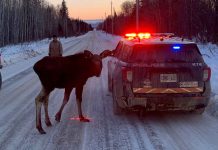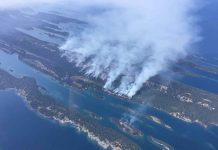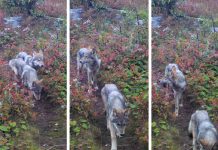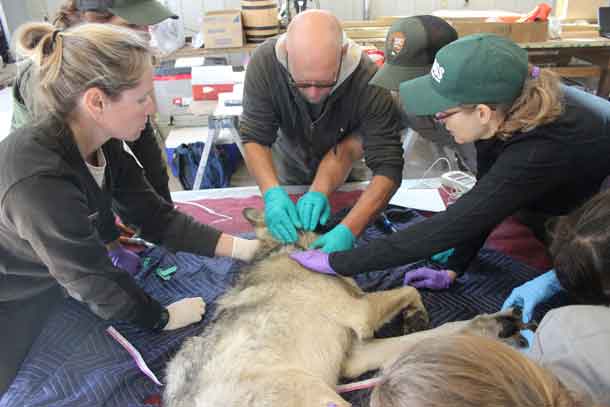
HOUGHTON, MICH – The two wolves brought to Isle Royale National Park on September 26 have been seen on wildlife cameras and tracked via a GPS monitoring collar, moving around the island and feeding on provisioned moose left for them. The joint capture effort between the Grand Portage Band of Lake Superior Chippewa and USDA Wildlife Services (APHIS) has expanded the dataset and knowledge of wolf pack activity in Minnesota and caught more wolves in the first week than expected. Their efforts have been a critical part of the success of the wolf relocation to date.
Over the weekend, game cameras monitoring a moose carcass caught the first images of the two wolves recently translocated to the island. As part of the translocation efforts, moose carcasses were placed in specific areas on the landscape to provide initial nutrition and attract wolves to these locations while subsequent wolf translocations occur in different areas.
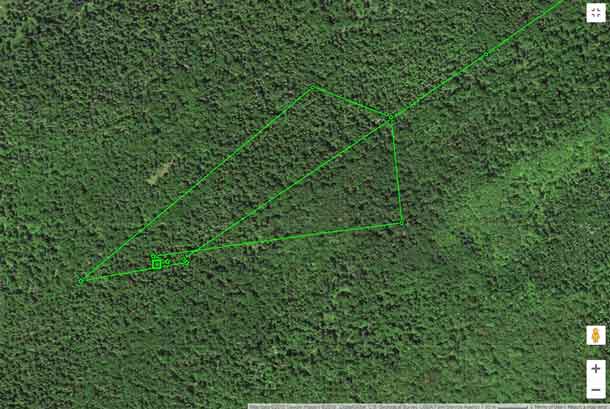
At different times both wolves, outfitted with GPS collars, visited carcass sites. The image above shows GPS locations for the 4-year-old female (ISRO-2018-001). She found the first carcass within 2 hours of leaving her crate (green square in the map). She remained in the vicinity of the carcass through the following morning and then moved northeastward and visited another location where the NPS stationed a moose carcass.
As of this press release, her last GPS position indicated she has moved at least 12 miles into the interior of the island. The NPS will use GPS collar data to determine how translocated wolves form social groups and visit kill sites to understand more about predation impacts, to keep track of individual life histories, and to confirm reproduction.
The collar signals from the male have not uploaded any data which is normal for satellite monitoring startups, but he has been seen in game cameras and is moving around the island. The capture and translocation operations will continue in Minnesota and Michigan for the next several weeks.



